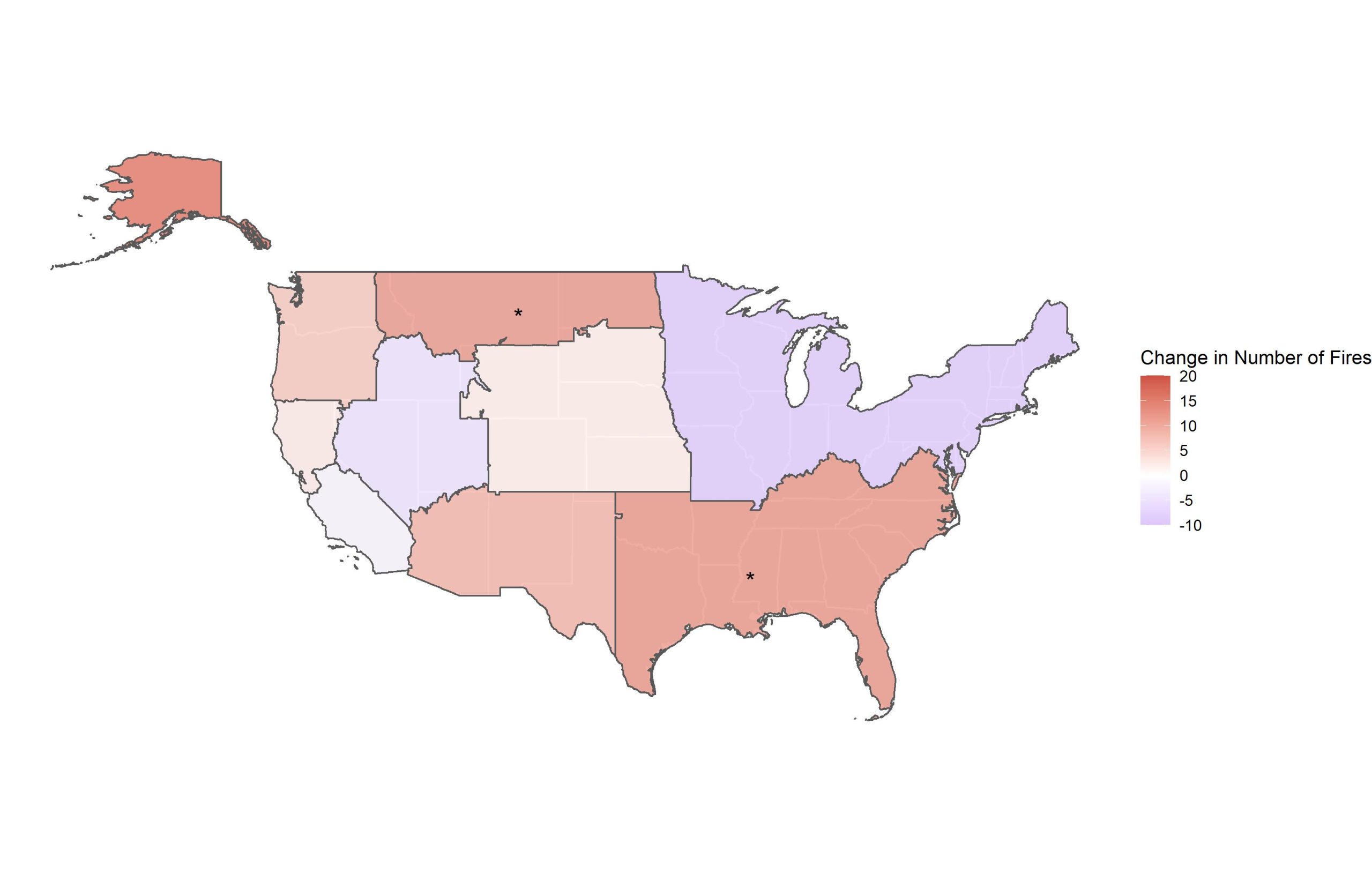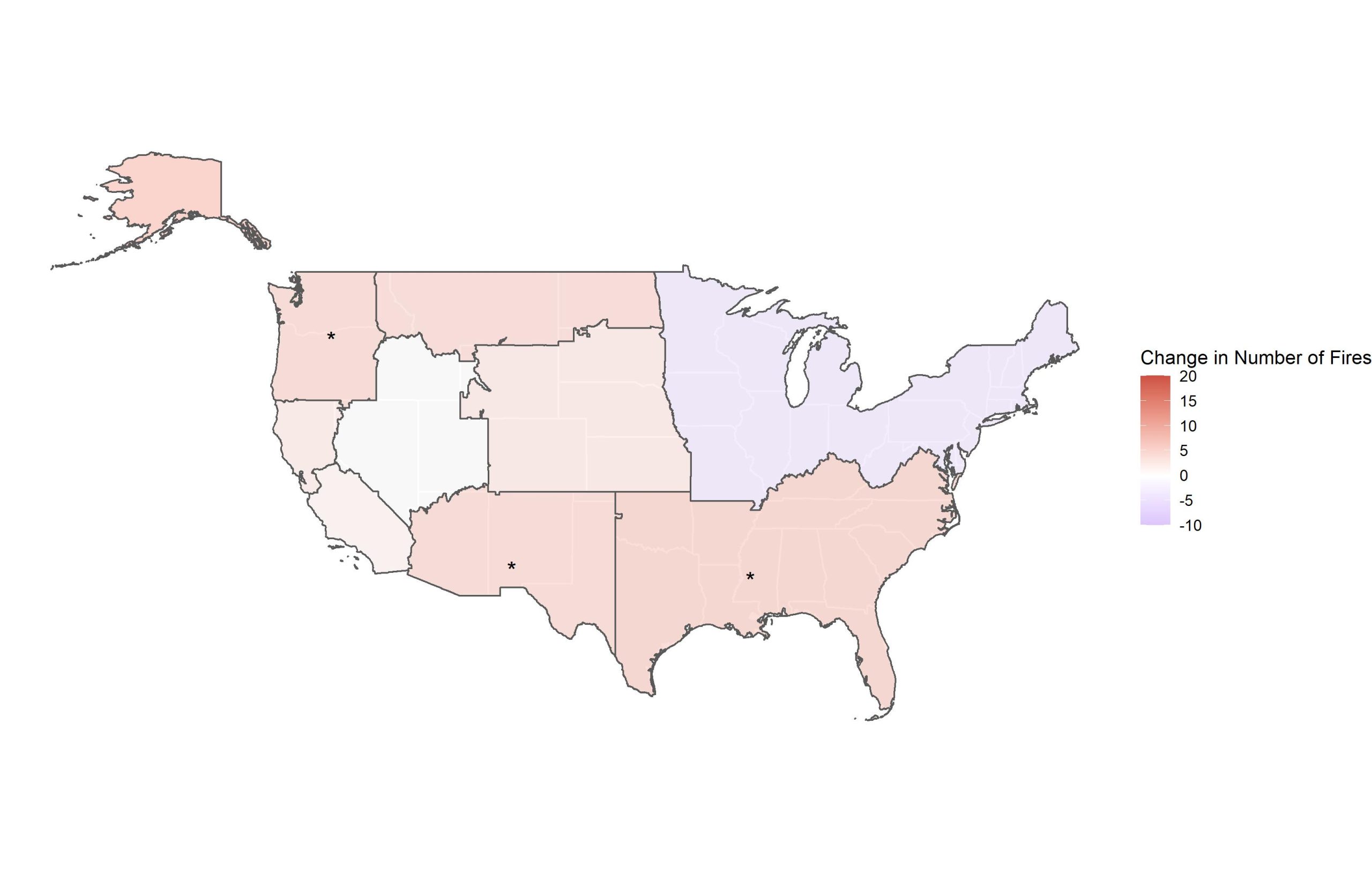Change in simultaneous occurrence of 1000+ Acre and 75th Percentile fires, comparing 1984-2001 to 2002-2019. Both maps are divided into regions, with each region representing one GACC. The left panel corresponds to all large fires (ALF, 1000+ acres) while the right panel corresponds to 75th percentile fires (VLF), as determined for each GACC. The shading of each region indicates the change in number of ALF or VLF, respectively, between the two time periods. Red represents an increased number of fires, while blue represents a decreased number of fires. More large fires (1000 acres or greater) occurred during the peak month of simultaneity in the more recent time period, i.e., in 2002-2019 relative to 1984-2001. Statistical significance of the change in number of fires is denoted with asterisks, (*) corresponds to p < 0.05, (**) corresponds to p < 0.01 and (***) correspond to p < 0.001. Data on simultaneous wildfire occurrence come from the Monitoring Trends and Burn Severity (MTBS) project. Approach is based on Podschwit & Cullen (2020) https://doi.org/10.1071/WF19150. This visualization was made as part of NSF Growing Convergence Project 2019762.
Category: Uncategorized
Month of Peak Wildfire Simultaneity in US Regions
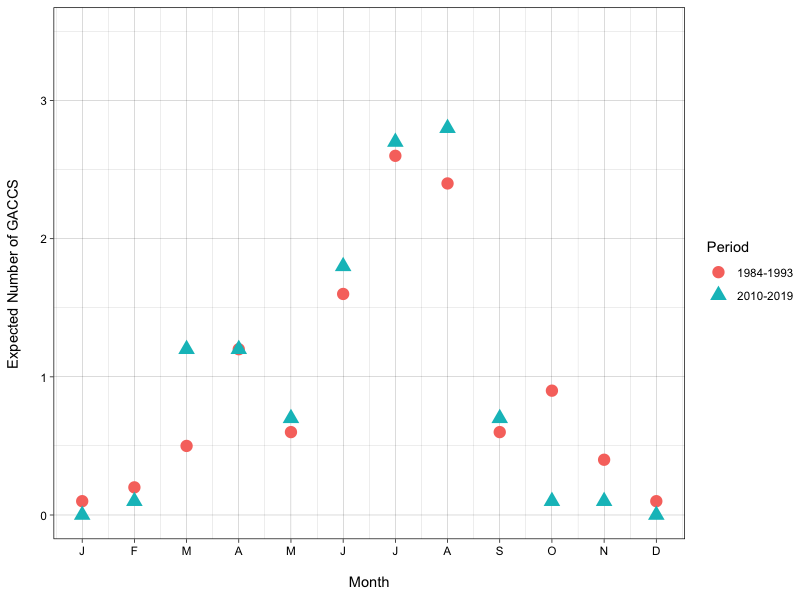
Wildfire Simultaneity – Correlation Between US Regions
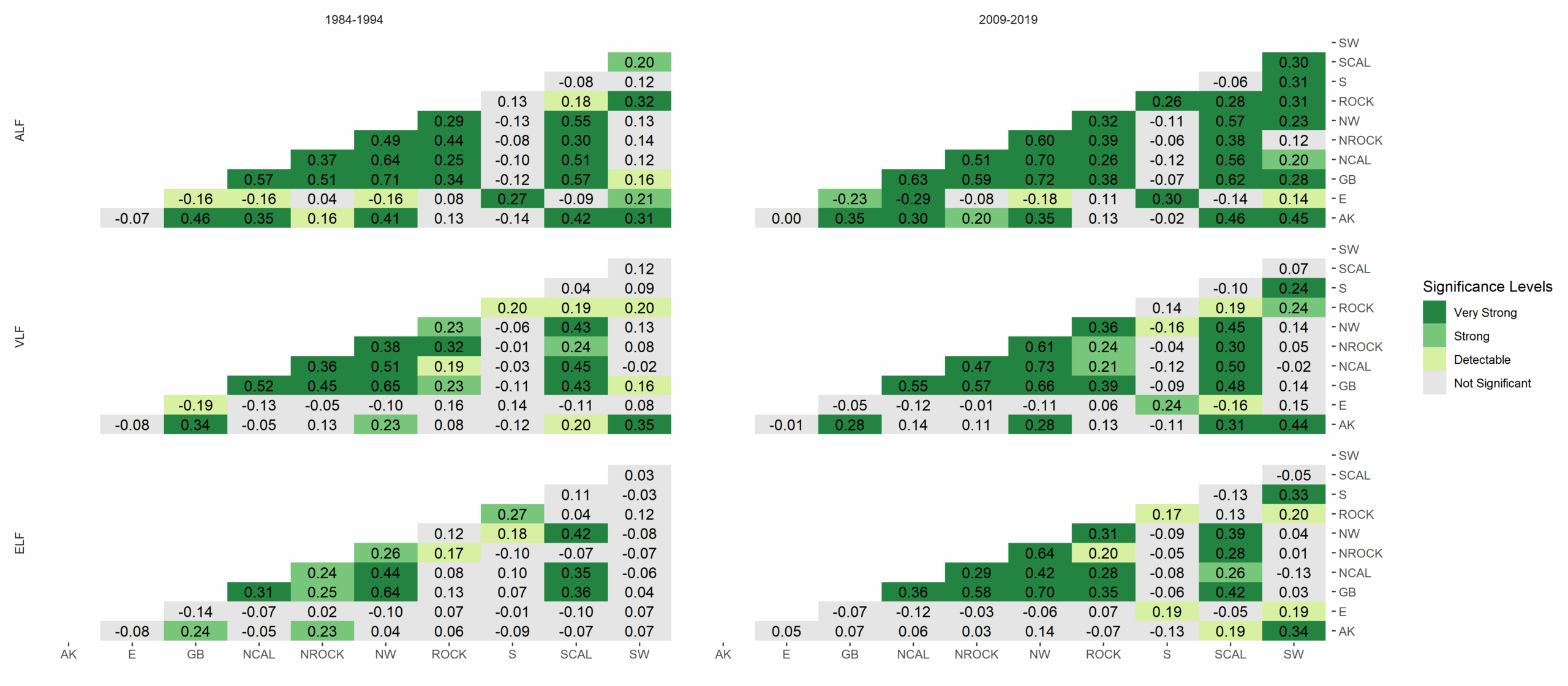
2040-2070 Median Annual Days Above Historical 97th Percentile ERC
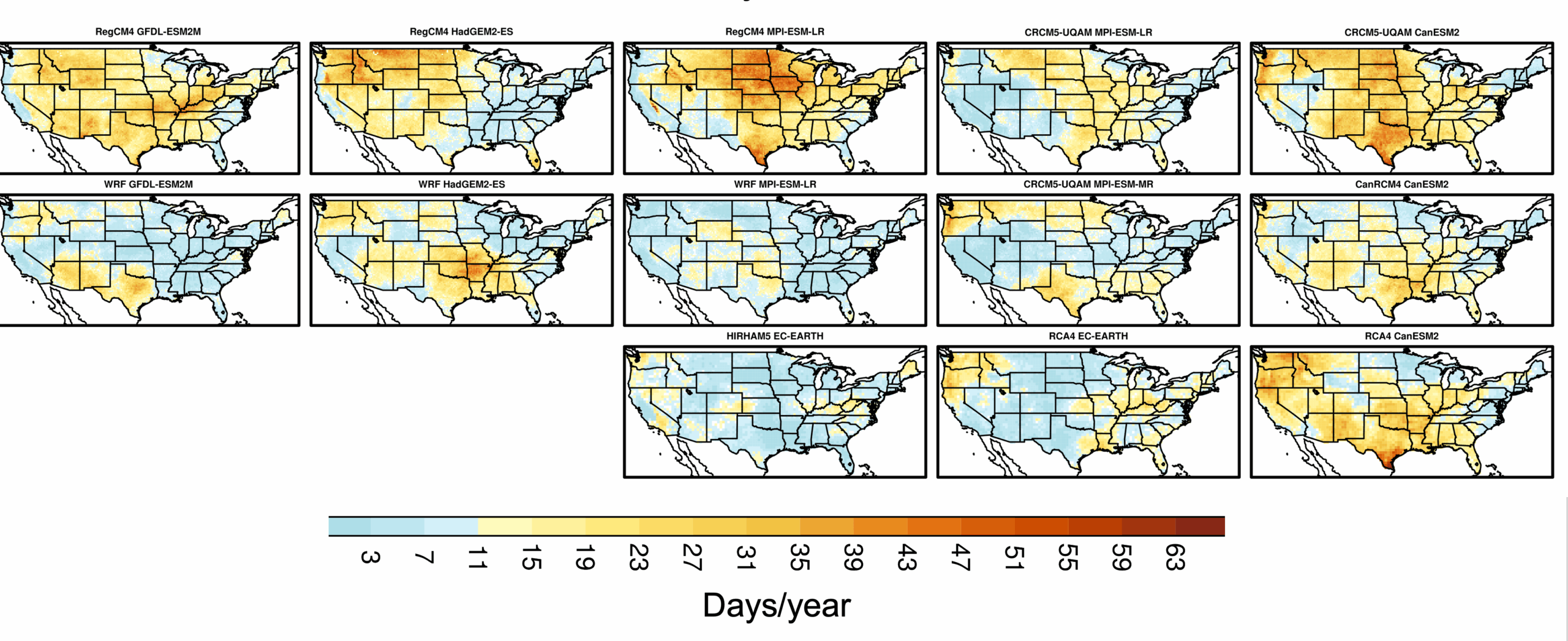
2040-2070 Median Annual Days with Above Historical 97th Percentile ERC
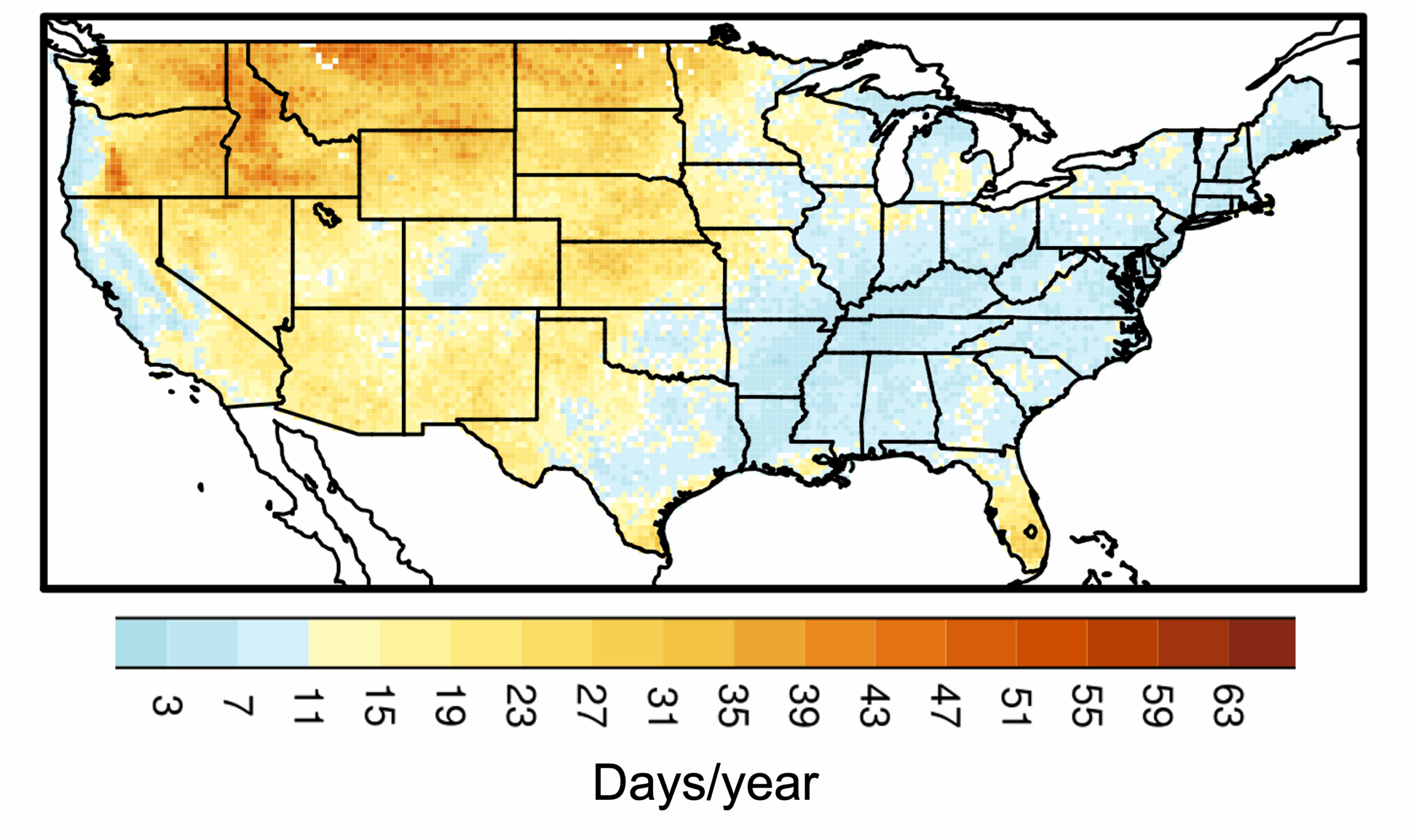
Change in Fire Season Start and End Date based on Climate Model Projection of ERC
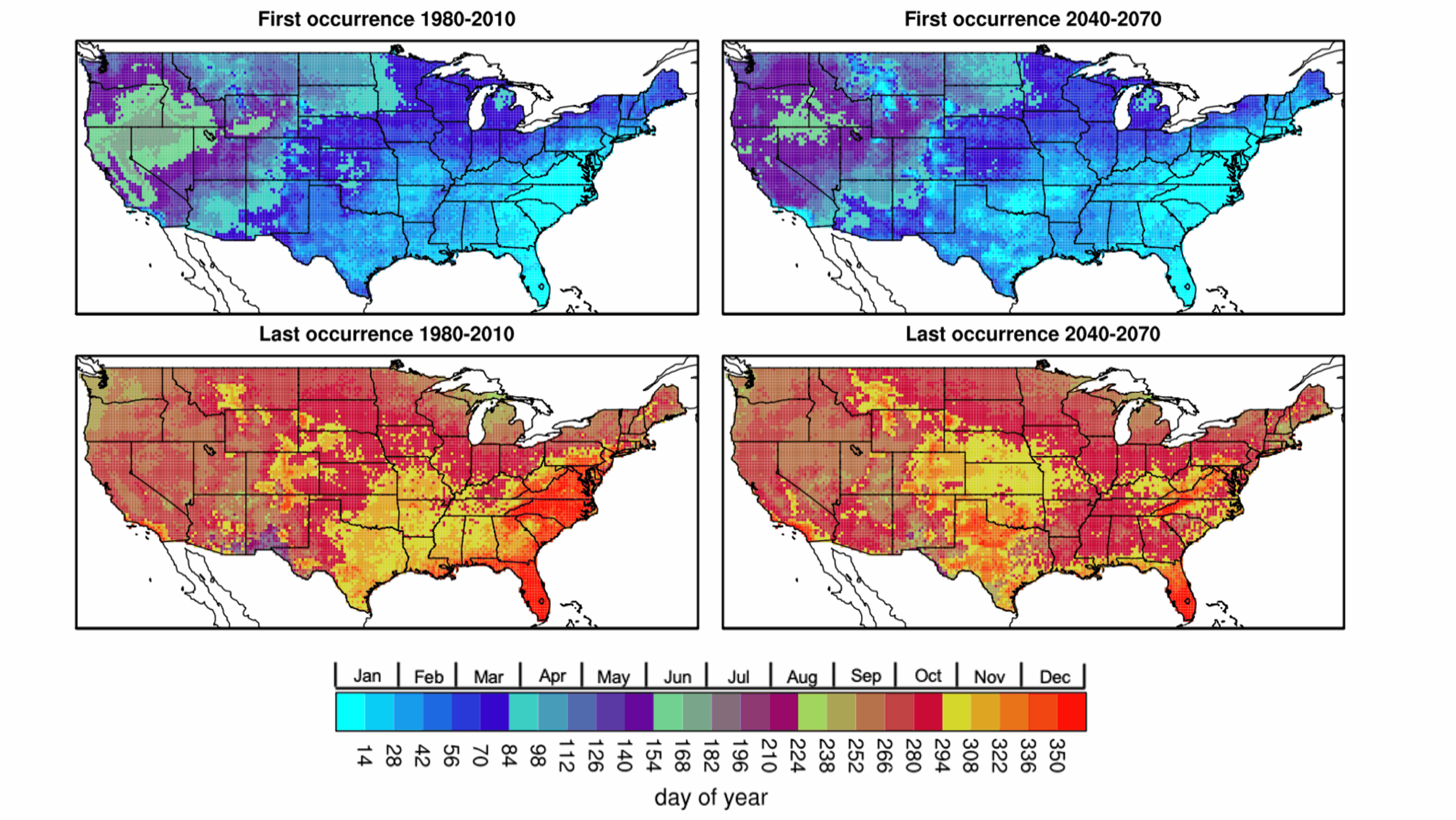
Projected Fire Danger East Troublesome Fire (CO) comparing 1970-2000 and 2040-2070
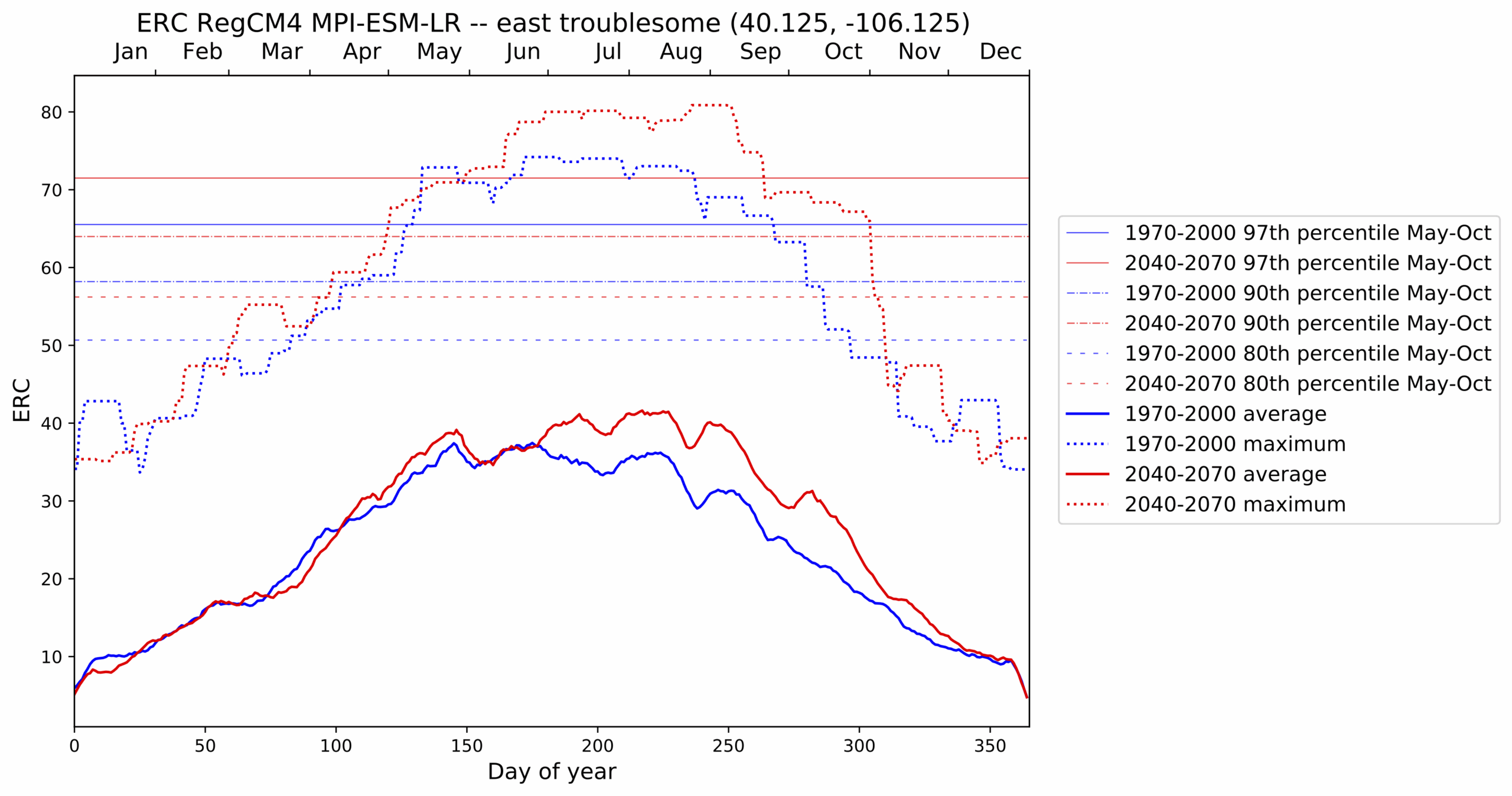
Change in Fire Season Start and End Date based on Climate Model Projection of ERC
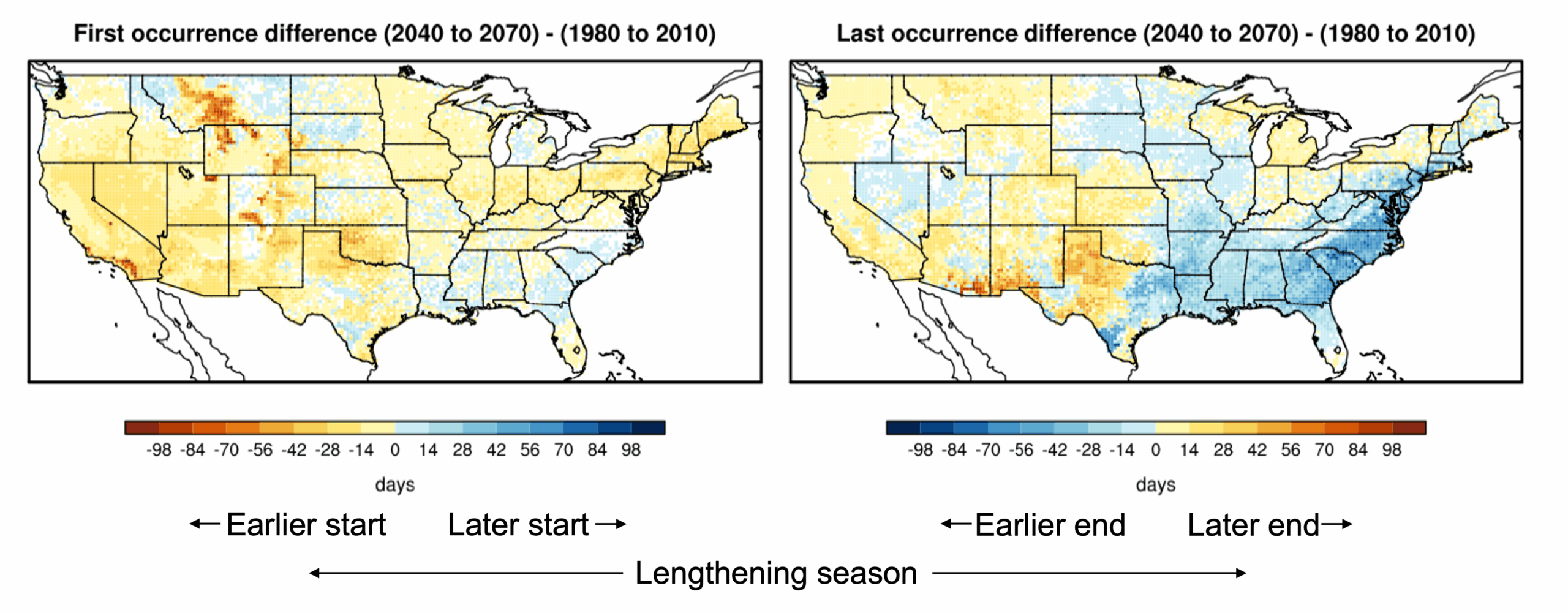
Projected Fire Danger (ERC-Ensemble) Creek Fire (CA) comparing 1980-2010 and 2040-2070
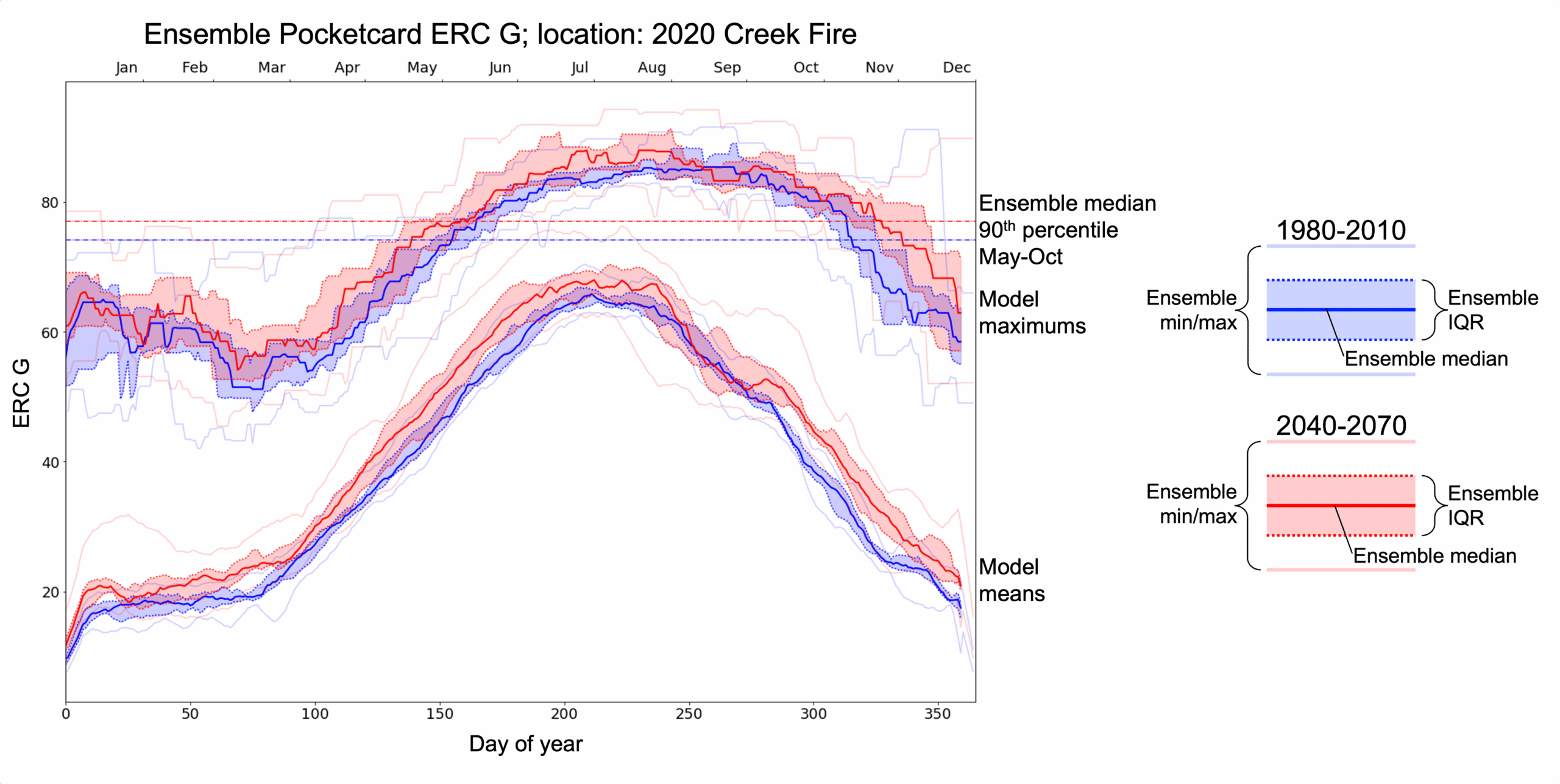
Projected Fire Danger (ERC-Ensemble) Lionshead Fire (OR) comparing 1980-2010 and 2040-2070

